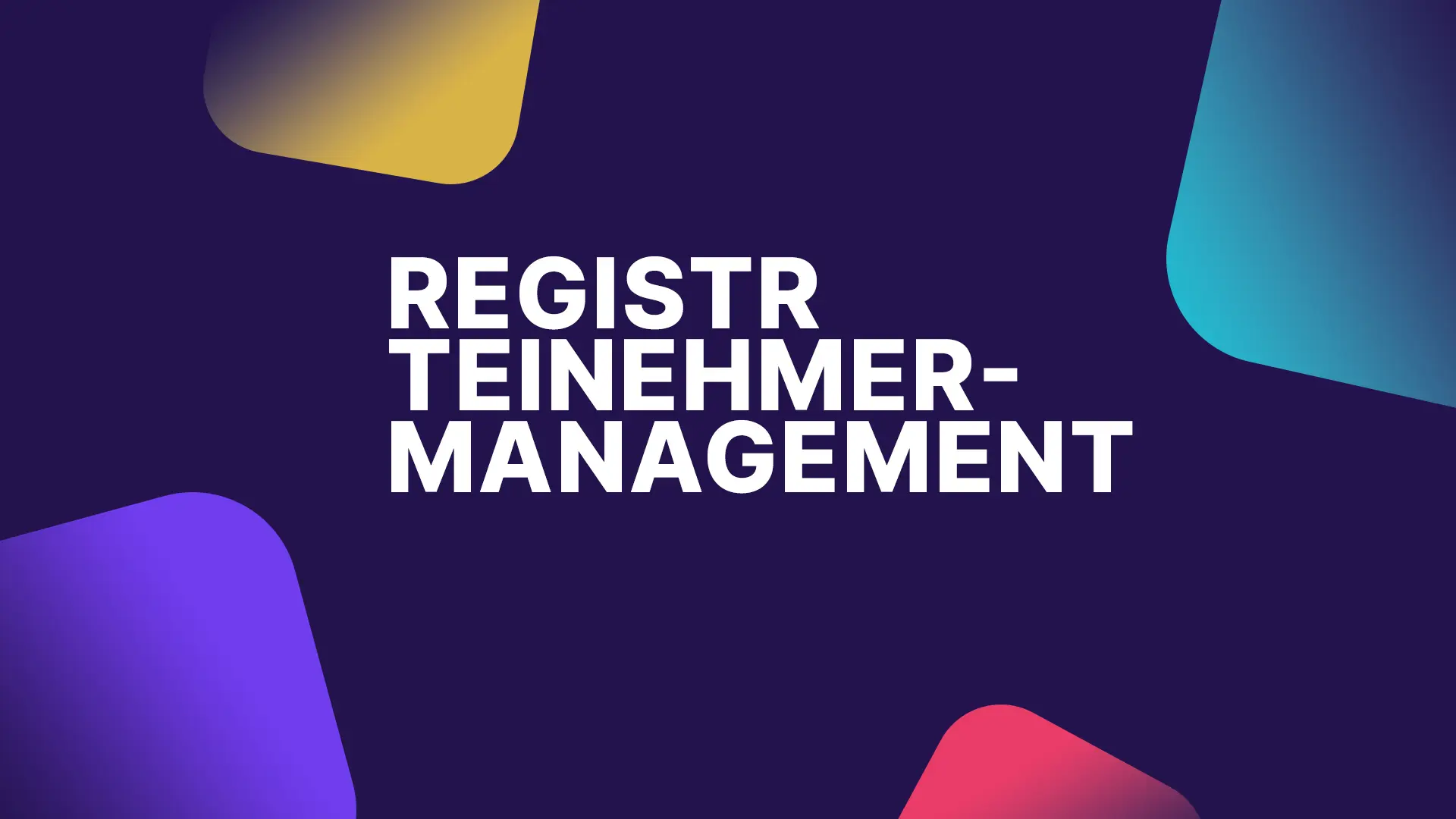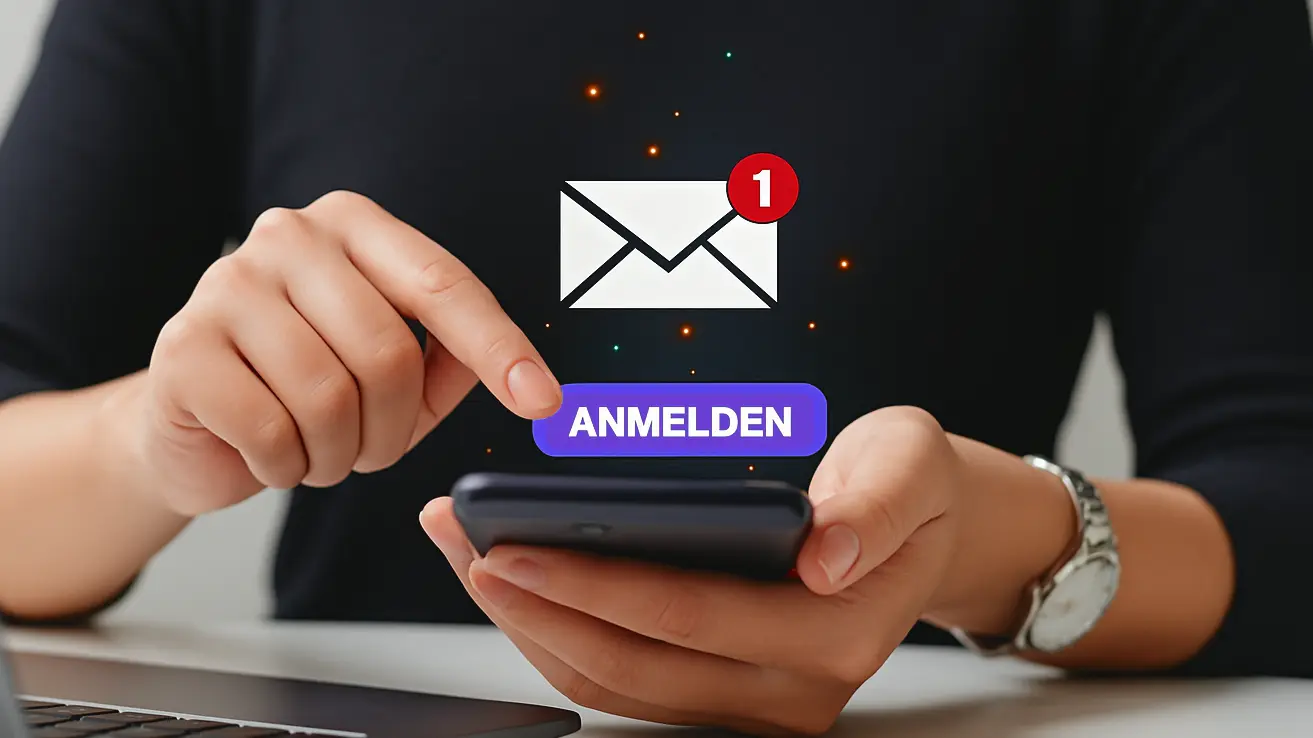Invitation management is one of the most important success factors in event marketing. Especially in the B2B sector, a professional invitation determines whether the right people attend and whether an event creates added business value. A well-designed system increases participation rates, simplifies organisational processes and contributes positively to brand perception. This article explains what professional invitation management means, how it differs from participant management and how digital invitation management supports companies.
What does invitation management mean in the B2B sector?
Invitation management encompasses all tasks related to preparing and executing the invitation phase of an event. This includes defining the target group, creating the invitation, sending it out, following up, sending reminders, and documenting acceptances and rejections. The more professionally this process is designed, the higher the participation rate will generally be. This rate plays a key role in B2B events because it determines the return on investment.
Invitation management is not just an organisational process, but a strategic tool for positioning an event. It conveys the benefits, value and aspirations of an event and lays the foundation for a successful participant relationship.

10 tips for efficient event planning
Efficient event planning: Discover 10 practical tips for successful events – from budget planning and digital tools to participant management.

registr – Participant registration & management
Participant registration for events made easy: ✅ GDPR-compliant, ✅ corporate look, ✅ mobile-friendly. Request a demo now!
Difference between invitation management and participant management
Although both areas are closely related, they pursue different goals. Invitation management ends with registration for the event. Participant management begins from the moment a person has accepted the invitation. It includes confirmations, ticket dispatch, check-in processes, support, any changes and follow-up communication.
Simply put:
Invitation management encourages people to register.
Participant management ensures that they have a positive experience.
It is worthwhile for companies to consciously separate the two processes, as they require different skills, tools and communication approaches.
Why professional invitation management is so important for B2B events
Participants in business contexts rarely act on spontaneous impulses. There are internal consultations, schedules, priorities and decision-makers. The invitation must therefore be clear, convincing and targeted. It answers one key question: why is it worth attending this event?
Successful invitation management reduces queries, builds trust, looks professional and has been shown to increase conversion rates. It also contributes to the organiser’s reputation and influences how a company is perceived as a host.
What is digital invitation management?
Digital invitation management describes the use of software, automation and centralised systems to plan and implement the invitation phase of an event. Instead of manual Excel lists or individual emails, structured workflows are used to address target groups precisely and record all relevant data in compliance with the GDPR.
Digital systems enable personalised invitation texts, automated follow-ups, real-time reporting, intelligent reminder logic and significantly simplified registration. They create a continuous process that combines invitations, registration and participant management, thereby increasing efficiency, transparency and user-friendliness.
This is exactly where modern event platforms such as Polario, registr or Mobile Event App come in. They enable event managers to centrally control the entire communication flow and implement invitation management not only digitally, but also strategically and scalably. Whether automated mailings, segmented target group addressing or digital check-in on site, these solutions show how digital systems simplify invitation processes, professionalise them and make them measurably more successful.

How to manage events efficiently: an overview of methods and tools
Manage events efficiently—with proven tools, clear processes, and a practical step-by-step plan.

Event management software comparison: categories, use, and providers
Which event management software is right for your use case? We show you categories, possible applications, and suitable tools.
Advantages of digital invitation management
Digital invitation management offers several key advantages for businesses.
A digital process saves time, reduces sources of error and creates transparency for all involved. Personalised content increases relevance for recipients and thus also the likelihood of registration. Digital workflows make it possible to address multiple target groups simultaneously while still communicating individually. Companies also benefit from legally compliant data management and significantly greater scalability for future events.
The most important success factors in invitation management
Three factors play a key role in ensuring that invitation management is effective in a B2B environment: relevance of the message, clarity of the process and simplicity of registration. An invitation should communicate specific benefits, offer a clear structure and require as little effort as possible. The more intuitive the registration process, the lower the dropout rate.
Timing is another crucial factor. Many participants only respond to the second or third reminder. A structured communication plan helps to maintain attention over a longer period of time.

Professional guest management: the underestimated lever for customer loyalty
Structured guest management strengthens customer loyalty, with tools, use cases and tips for your events. Inform now!

Why good participant management determines the success of your event
Professional participant management ensures smooth events and satisfied guests. Find out what matters most.
Five tips for successful digital invitation management
Digitalisation alone is not enough. How systems are used is crucial.
Formulate a clear, benefit-oriented invitation that focuses on the added value of participation.
Plan a reminder strategy, as many confirmations only come after several points of contact.
Keep the registration process as short as possible so that participants can complete the registration without any obstacles.
Use data and segmentation to communicate in a personalised and relevant way.
Analyse open rates, clicks and registrations to optimise future events in a targeted manner.
Conclusion
Invitation management is one of the most important components of event marketing and plays a decisive role in determining whether a B2B event will be successful. A clearly structured process, combined with modern digitalisation and targeted communication, increases participation rates, strengthens relationships and improves the impact of the event. Companies that implement invitation management professionally create more efficient processes, a better participant experience and a measurably higher level of event success.
FAQ:
What does invitation management mean in the context of events?
Invitation management encompasses the planning, creation, dispatch and administration of event invitations. This includes target group selection, personalisation, dispatch, follow-ups and tracking of acceptances and rejections. The aim is to motivate the right people to participate and to manage the registration process efficiently.
What is the difference between invitation management and participant management?
Invitation management ends with registration. It focuses on communication before the event and on motivating people to participate. Participant management begins after registration and covers topics such as confirmations, ticketing, check-in, support and follow-up communication.
What is digital invitation management?
Digital invitation management uses software solutions and automated processes to send invitations professionally, scalably and in compliance with GDPR. It enables personalised communication, automatic reminders, real-time reporting and a simple registration process.
What are the advantages of digital invitation management?
Digital solutions save time, improve data quality, simplify organisational processes, increase participation rates and enable personalised communication. Companies also benefit from transparency through statistics and more efficient follow-up.
Which tools are suitable for digital invitation management?
Platforms such as Polario, registr, and Mobile Event App support the entire process from invitation and registration to check-in and participant support. They offer features such as automated mailings, personalised invitations, reminder logic, and real-time reporting.
For which events is digital invitation management worthwhile?
Digital processes are particularly suitable for conferences, industry events, networking formats, internal company events, hybrid events and recurring event formats. The larger and more complex an event is, the greater the benefits of a digital system.
How can participation rates be improved?
Personalised invitations, clear benefits, simple registration and structured reminder communications increase the likelihood of registration. Automated processes can help with this.
Is digital invitation management GDPR compliant?
Yes, if the software used complies with data protection regulations. Tools such as registr, Polario and Mobile Event App offer security standards and GDPR-compliant data management, ensuring that sensitive information is processed securely.
How do I measure the success of invitation management?
Important key figures include open rates, click-through rates, registration rates, no-show rates, engagement in follow-up phases, and participation rates. Digital platforms offer integrated dashboards for this purpose.


